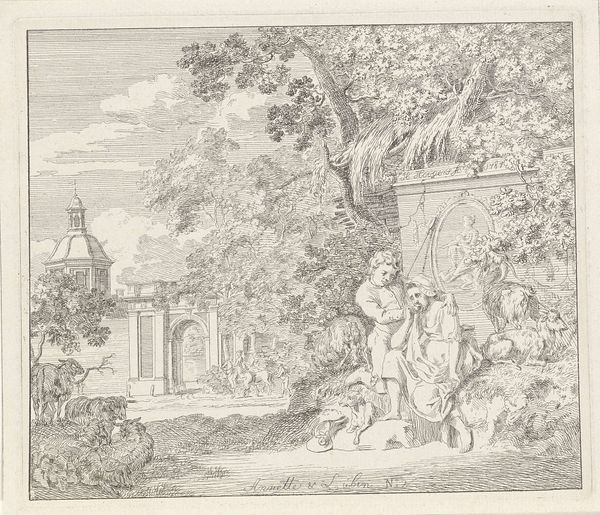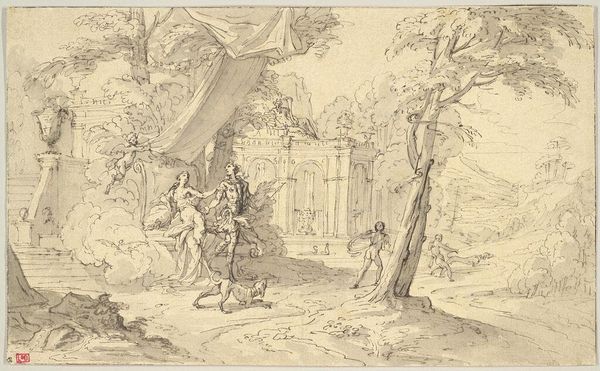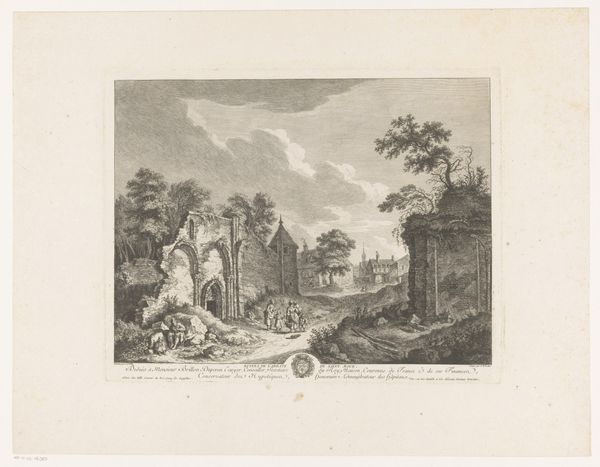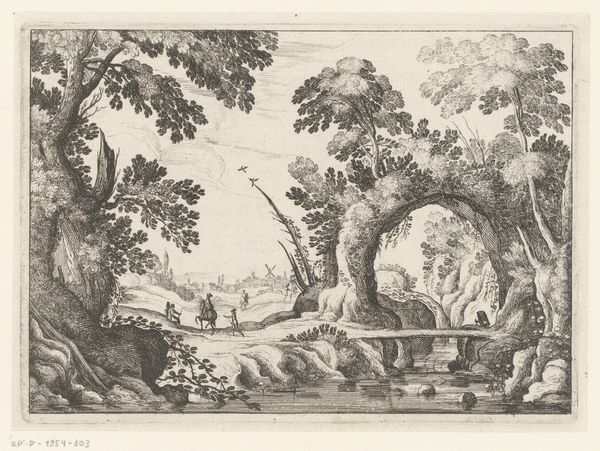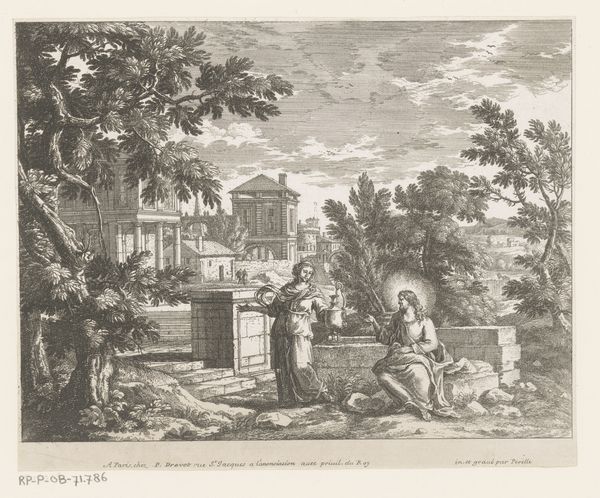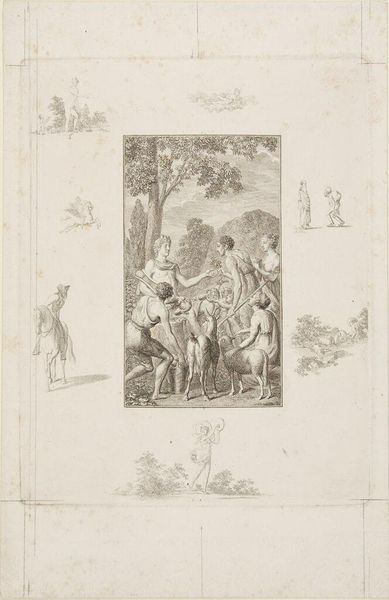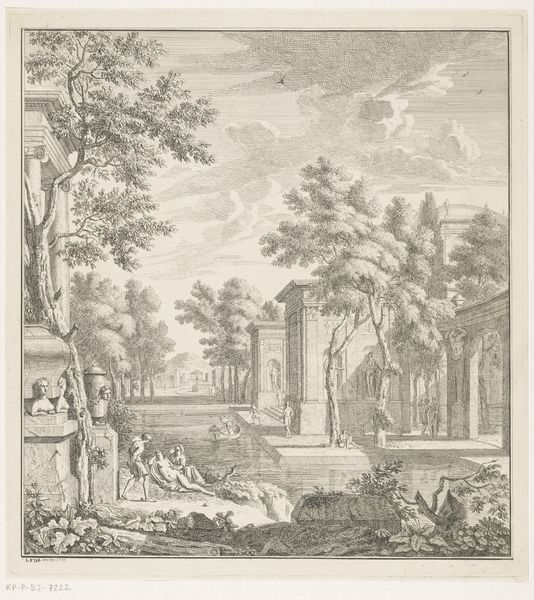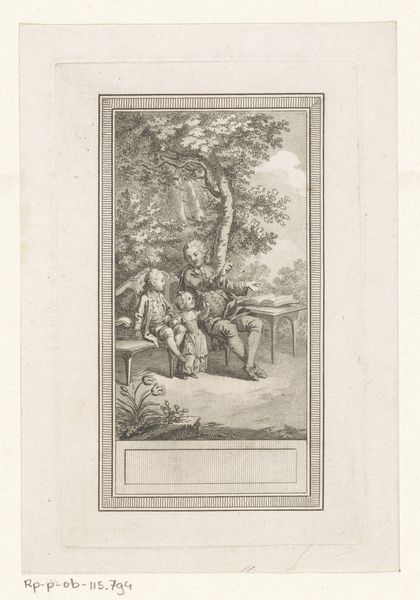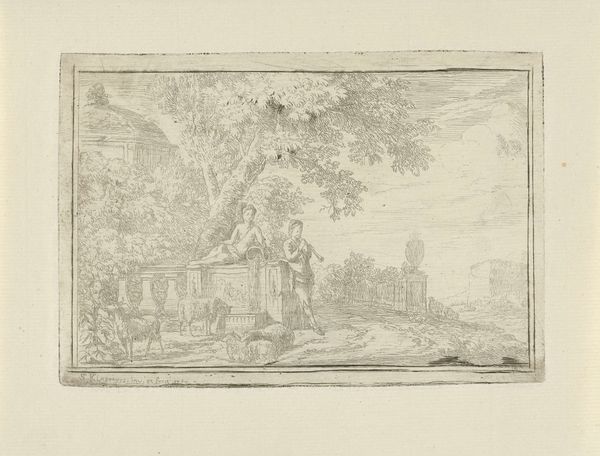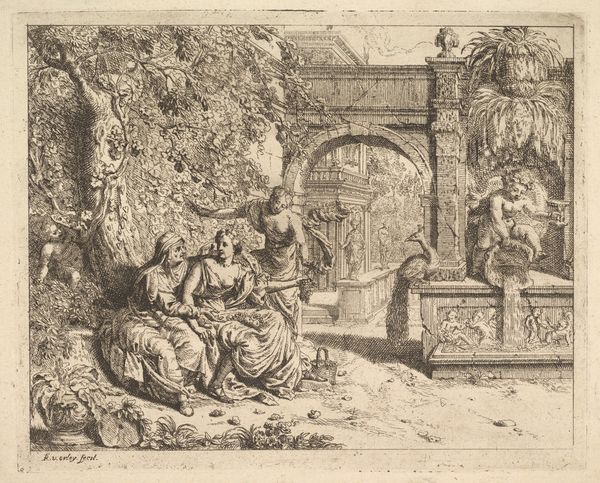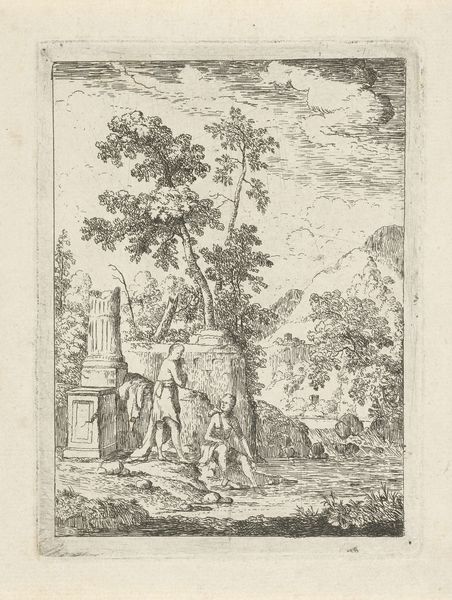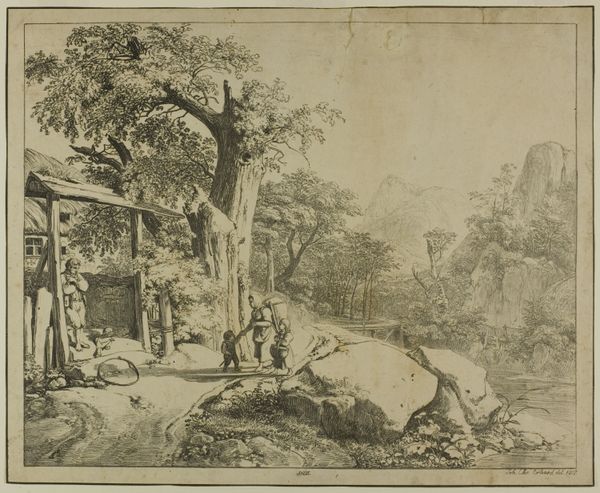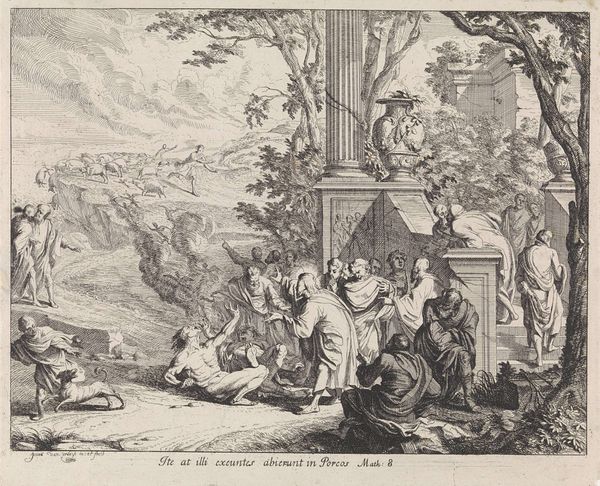
print, engraving
#
neoclacissism
# print
#
landscape
#
genre-painting
#
engraving
Dimensions: height 155 mm, width 178 mm
Copyright: Rijks Museum: Open Domain
Curator: Looking at this piece, made in 1787, you get a certain wistful pastoral scene. Editor: Absolutely, it feels almost melancholic. There’s something in the way the light falls, or doesn't fall, and that crumbling monument feels particularly significant. Who is the author and what does the title suggest? Curator: The print is called “Paar bij een klassiek monument en een stadspoort” by Hendrik Hoogers. Its title translates to 'Couple near a Classical monument and city gate.' It's an engraving, and the fine lines really give it a delicate feel. Notice how much labor must have gone into carving each little stroke! Editor: Engravings offer a fascinating study into the divisions between artisan and artist, especially in a Neoclassical context. How are class and labor implicated in its consumption, and how did this particular scene reflect ideas circulating about status, romance, or landscape at that time? The couple amidst those classical trappings...there is some real political dialogue there. Curator: The artist uses a familiar vocabulary: Neoclassicism with romantic figures, and an awareness of genre painting conventions. A monument, a city gate in the back, but mostly sheep, so more natural landscape in the front than urban cityscape! Editor: It’s staged so carefully. And to see the animals... well it suggests certain privileges afforded to this couple who seem undisturbed by questions of labor in agriculture. It seems like a conscious depiction that privileges a certain gaze of class and race. Curator: Perhaps. The social context certainly influences how we perceive it now, as we see similar trends today reflected and amplified through fashion, images, music and film. But in 1787, prints made art more accessible. The laborious process translated into wider distribution. Editor: True. By reproducing and distributing art through print, it allows images and social structures to become widely accessible to the masses. Let's not forget about the labor that made distribution possible. It serves as a reflection of social issues as well as humanizing its history! Curator: Ultimately, viewing art from different critical perspectives enriches its appreciation. Editor: I agree; let’s keep the conversation going!
Comments
No comments
Be the first to comment and join the conversation on the ultimate creative platform.
